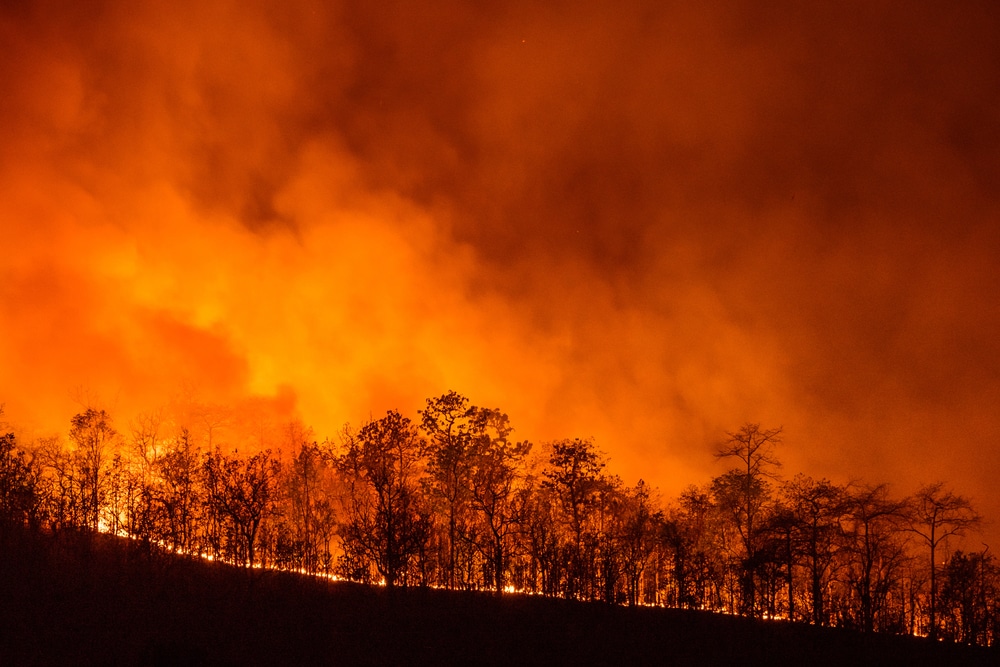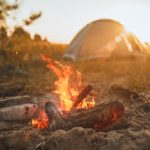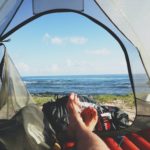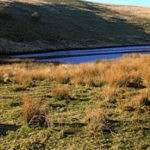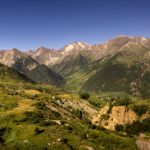With fire season fast approaching, we’ve updated our guide on how to escape a wildfire, inspired by Peter’s close call in Greenland
When Peter headed to Greenland last summer to trek the Arctic Circle Trail, I knew he’d be unreachable for 7-10 days. He’s a highly experienced hiker, but there was a tiny part of me that couldn’t help but worry.
What if he twisted an ankle or fell into a ravine? What if he was attacked? What if he lost his backpack from a capsized kayak?
There were several scenarios that ran through my head – but a wildfire was not one of them. He was heading to the Arctic for goodness sake; to Greenland of which 80% is covered in ice! Fire was hardly a danger.
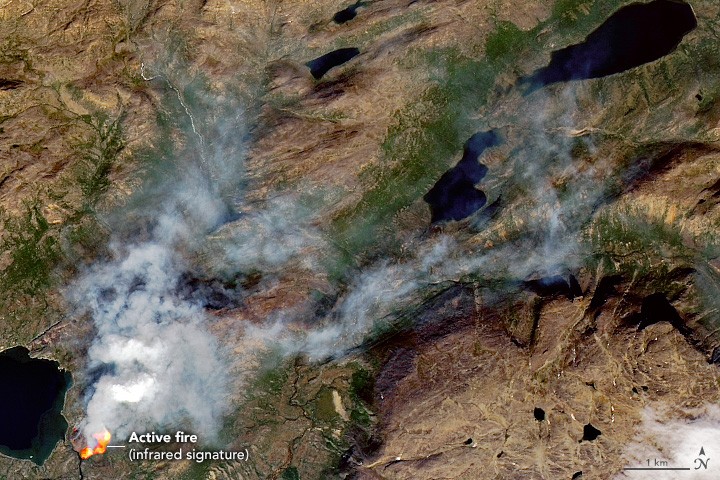
Only, it was. Peter got caught in a wildfire and was evacuated by helicopter. Knowing how to escape a wildfire is clearly important for avid hikers, especially those who often head out alone. Here are the essentials of what you need to know.
Stay calm
Wildfires are extremely dangerous and your first instinct might be to start running as fast as you can, but panicking can be deadly.
If the air isn’t too smoky already, use breathing exercises to calm yourself down. Take a deep breath, hold it for four seconds, then exhale slowly for four seconds. Maintaining a calm and healthy mental state is intrinsic to getting you out.
Protect your airways
Stay close to the ground and cover your nose and mouth with a cloth to filter out airborne ash. Be wary of wetting the cloth. If the fire is close, it can evaporate the water and damage your airways. Breathe the air close to the ground to avoid scorching your lungs.
Travel upwind and downhill
First, determine the direction of the wind. You can do this by looking high into the sky and noting which way the smoke is blowing, assuming there’s reasonable visibility.
Upwind (i.e. into the wind)
If the wind is blowing past you and towards the fire, then travel into the wind. If the wind is behind the fire and blowing towards you, travel perpendicular to the wind to escape both the fire and the path it will follow.
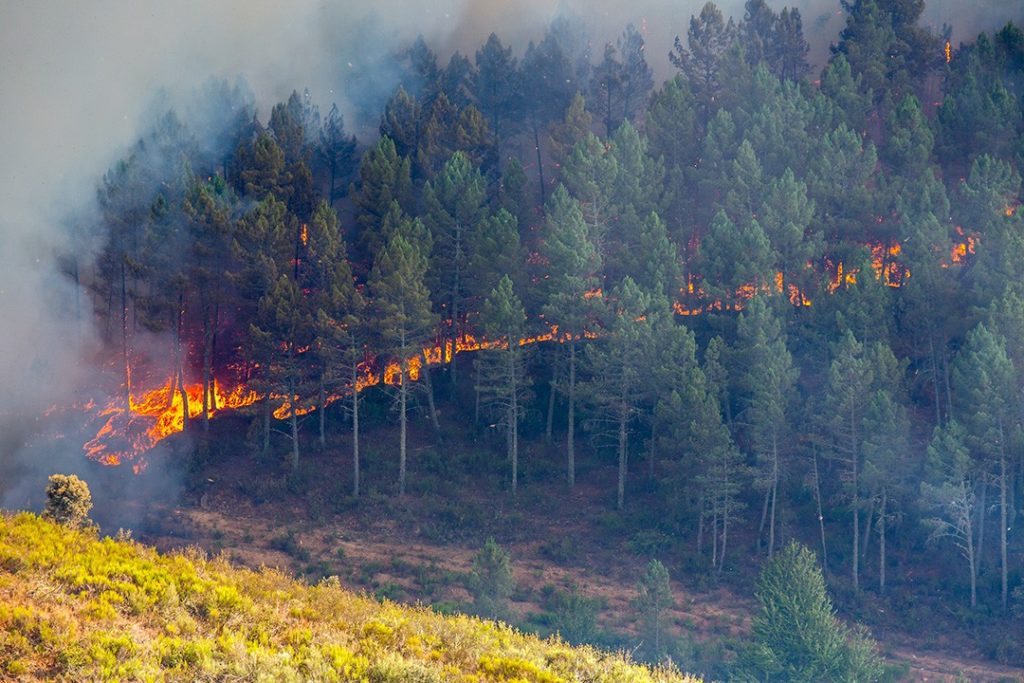
Downhill
If you are on a hill, travel down to level ground. Fire moves faster uphill due to updrafts so the most dangerous place to be is uphill and downwind.
That said, don’t hike down into a canyon or ravine. These can funnel intense heat and you may become trapped if the fire spreads around you.
Head for non-flammable terrain
Once you’ve determined your direction of travel, head for the biggest area that is unlikely to burn. The following list suggests some options.
- Large body of water that is not closely overhung with foliage
- Swampy areas
- Boulder field
- Road
- Riverbeds
- Open meadows
- Plowed fields
- Clear-cut area of woods
- As a last resort, an area that has already burned
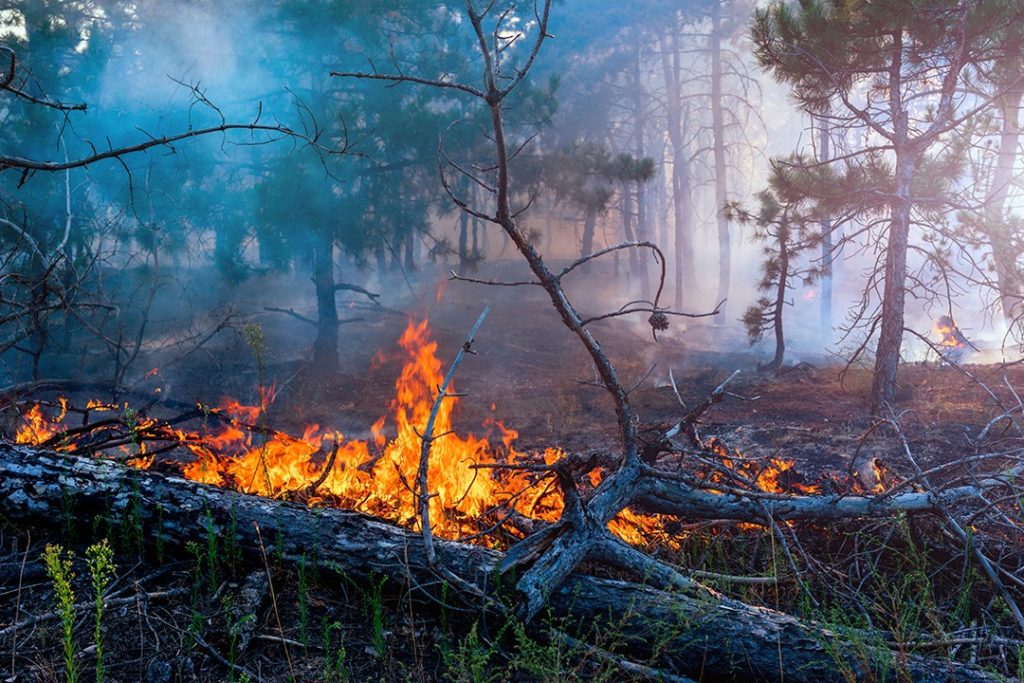
Avoid brush and tall grass. In general, large trees retain more moisture than dry fields, so if you can’t find any non-flammable terrain, avoid open areas with small, dry scrub brush. These will burn quicker than leafy greens.
Stay away from canyons, ravines and saddle-like ridges which funnel intense heat and can leave you trapped by the fire.
Don’t try to outrun the fire
In considering how to escape a wildfire, it can be tempting to try to outrun it. In this case, it would serve you well to remember that wildfires can travel at speeds up to 20mph and easily overtake a runner.
If you can’t escape a wildfire using the above tactics, try to make it through the leading edge of the fire into an area that has already burned. This isn’t ideal but is safer than staying in high-burn terrain.
Hunker down if trapped
If the fire surrounds you and there is no safe escape, find a depression in the topography with no vegetation. You may have to clear an area and dig a trench or gully. Lie inside it face down with your feet facing the direction of the flames.
Cover yourself with a jacket, dirt, rocks or anything else that can shield you from the fire. Again, breathe the air close to the ground to avoid scorching your lungs. Stay down until the fire passes.
Always practice fire safety
According to the US Forest Service, humans cause nine out of 10 wildfires. These are ignited by unattended campfires, fireworks, sparks from equipment or vehicles, burning leaves or debris and even cigarettes tossed from cars.
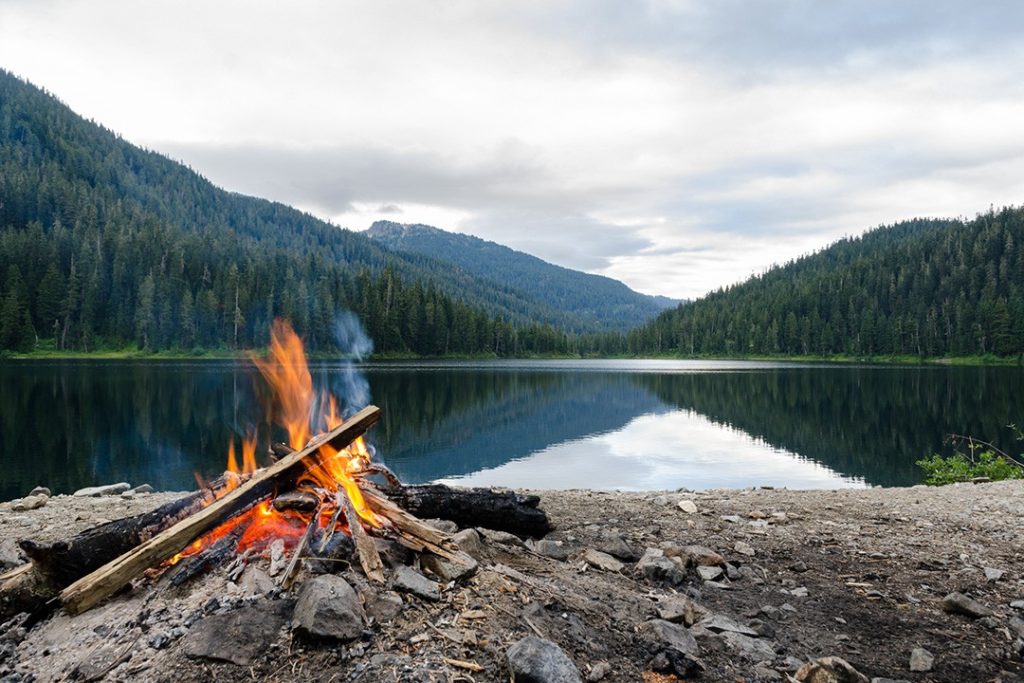
Clearly, preventing wildfires is the best way to escape them. Always follow these steps when hiking:
- Follow the Leave No Trace principles.
- Don’t build a campfire at a site with dry conditions. Check with park authorities to see if there is a burn ban.
- Use a designated fire ring or fire pit for your campfire.
- If there is no designated spot, look for a site away from tents, trees or scrub.
- Keep your campfire small and under control. Never leave it unattended.
- Allow the fire to burn completely to ash. Then, to fully extinguish it, pour plenty of water to drown the embers. Remember that the fire might be burning underground in the roots of trees or bushes. Stir the ashes and pour more water until all the hissing stops. Make sure everything is cold to the touch.
- If you are using a portable stove, make sure the area is clear of grass and other debris that might catch fire.
- If you see smoke or fire, note the location and alert authorities as soon as possible.
Enjoyed this post? pin it for later…
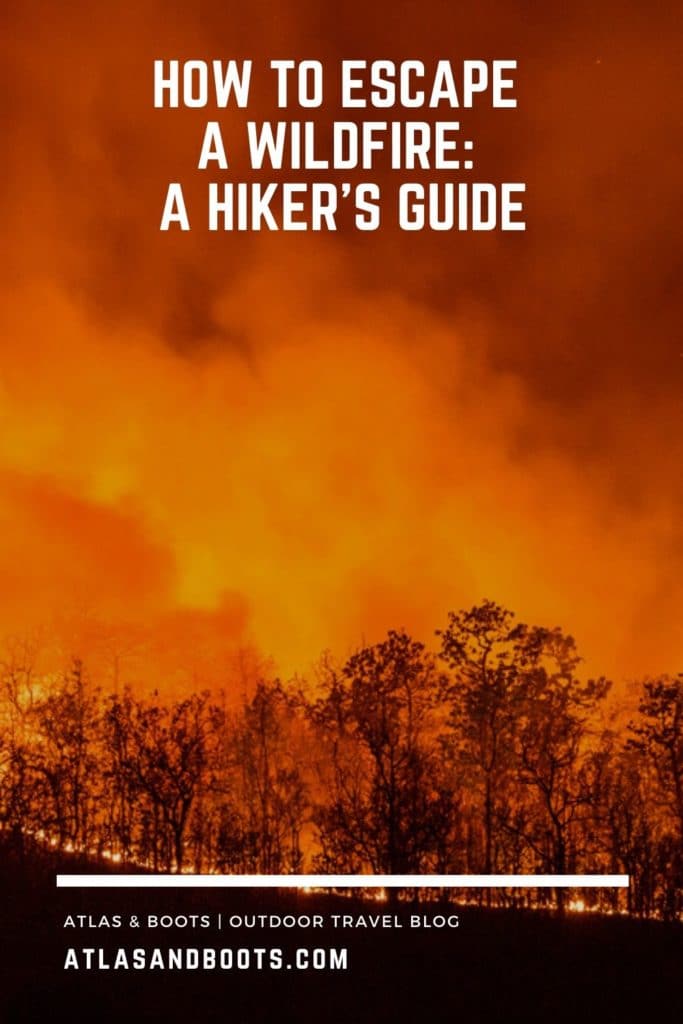
In Underland Robert Macfarlane takes us on a journey into the worlds beneath our feet. From the ice-blue depths of Greenland’s glaciers, to the underground networks by which trees communicate, this is a deep-time voyage into the planet’s past and future.
